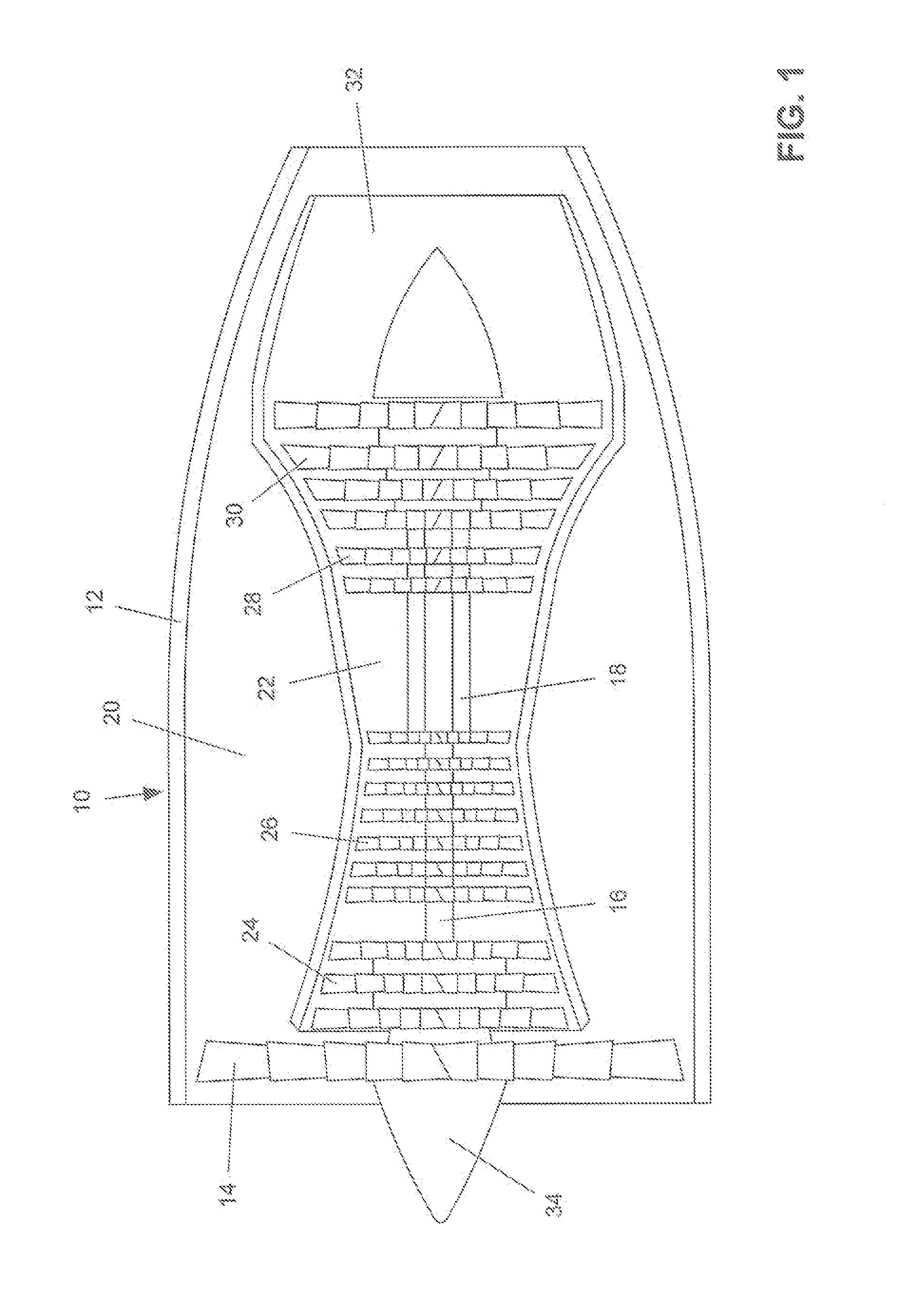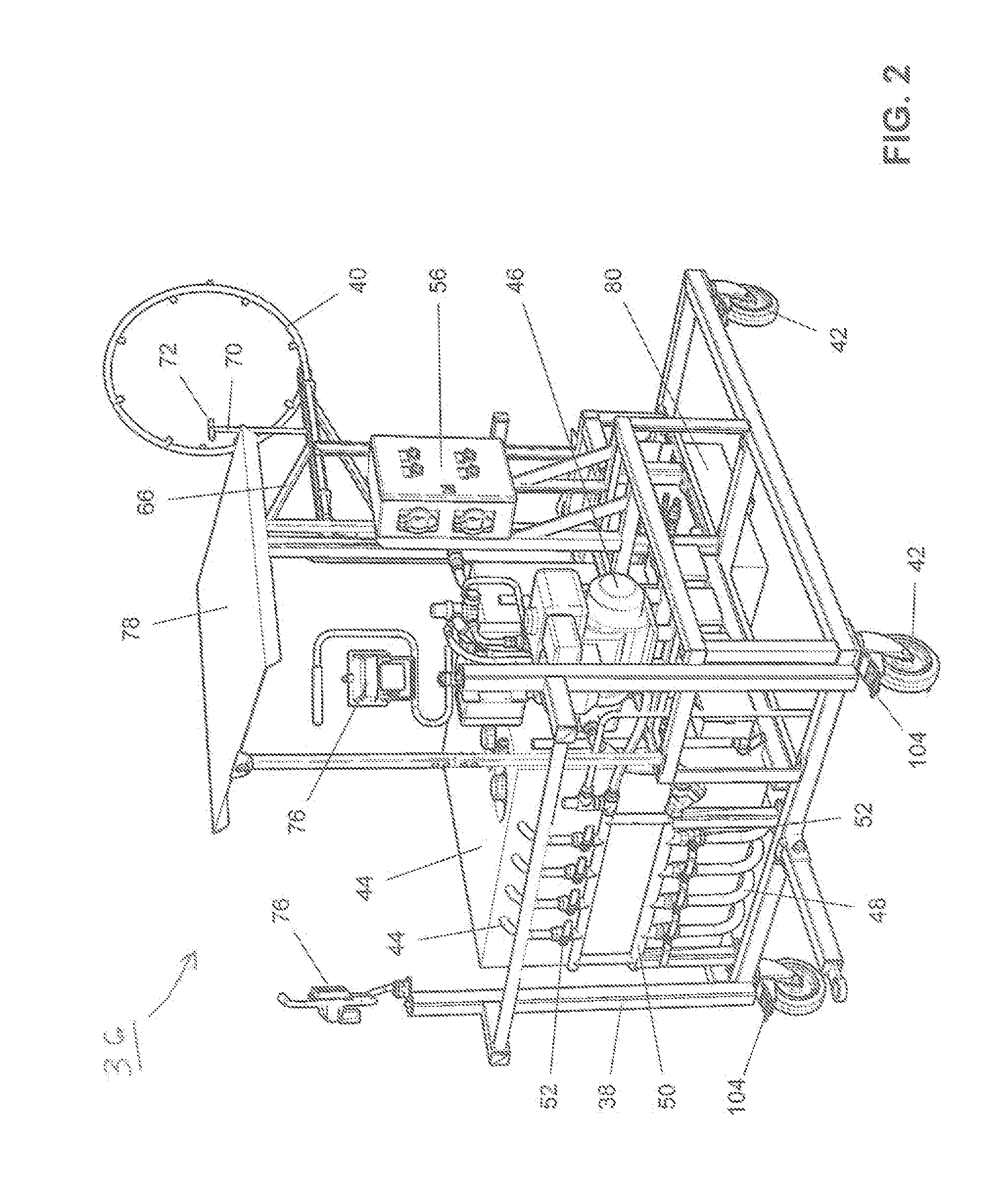Method and apparatus for cleaning jet engines
a jet engine and jet engine technology, applied in the direction of machines/engines, cleaning using liquids, transportation and packaging, etc., can solve the problems of reducing engine efficiency and jet engine contamination, and achieve the effect of optimizing the cleaning operation and minimizing the likelihood of operator error
- Summary
- Abstract
- Description
- Claims
- Application Information
AI Technical Summary
Benefits of technology
Problems solved by technology
Method used
Image
Examples
Embodiment Construction
[0026]FIG. 1 is a diagrammatic representation of a turbofan jet engine 10, which is exemplary of a type of jet engine with which the present invention can be utilized. Engine cowling or nacelle 12 surrounds the operating elements of the engine, which include main turbofan 14 which is connected to low pressure shaft 16. With the engine in operation, the fan 14 directs a portion of the incoming air through low and high pressure compressor stages 24 and 26 into the engine's combustion chamber 22 and the remainder of the air into bypass duct 20. After passing through both the low and high pressure compressor stages 24 and 26 the combustion air is combined with jet fuel and ignited in the combustion chamber 22.
[0027]The hot combustion gasses travel rearwards, expanding through and driving high and low pressure turbine stages 28, 30, before exiting the engine through the exhaust assembly 32. The turbines 28 and 30 provide the rotational force for the main propulsion fart and core engine c...
PUM
 Login to View More
Login to View More Abstract
Description
Claims
Application Information
 Login to View More
Login to View More - R&D
- Intellectual Property
- Life Sciences
- Materials
- Tech Scout
- Unparalleled Data Quality
- Higher Quality Content
- 60% Fewer Hallucinations
Browse by: Latest US Patents, China's latest patents, Technical Efficacy Thesaurus, Application Domain, Technology Topic, Popular Technical Reports.
© 2025 PatSnap. All rights reserved.Legal|Privacy policy|Modern Slavery Act Transparency Statement|Sitemap|About US| Contact US: help@patsnap.com



